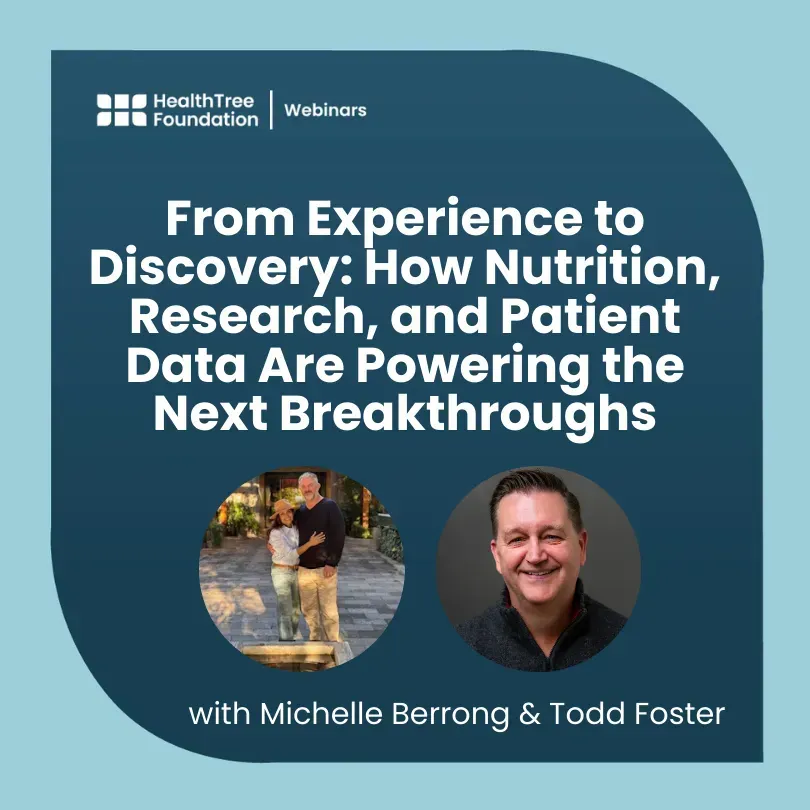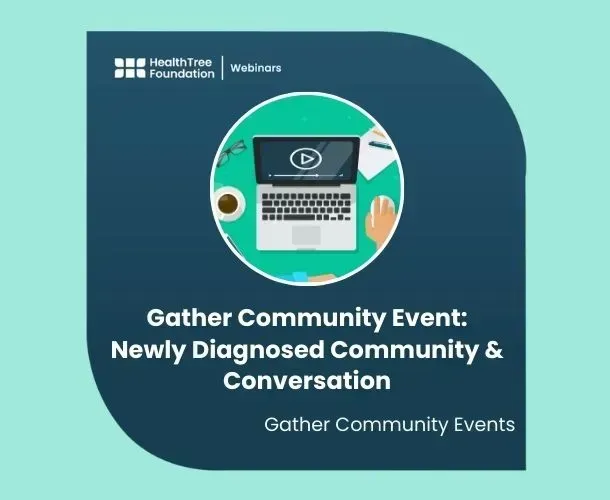MRD as a Clinical Trial Endpoint: A Patient Perspective

Is MRD (Minimal Residual Disease) a useful new clinical trial endpoint? The FDA recently hosted a meeting to hear the opinions of a 12-member ODAC committee on the subject. The committee voted 12-0 in favor of using MRD as a new endpoint. We are still awaiting the FDA's final decision.
While the majority of myeloma experts agree things are heading in the right direction on this topic, some online are debating whether the ODAC’s decision to accept MRD negativity as a surrogate endpoint in multiple myeloma trials was correct. I have been thinking about this a lot.
Let me share with you the patient perspective. I am not an expert at quoting clinical trial results and interpreting data to prove my point. I will leave those arguments to the leading myeloma researchers around the world. But I am an expert in being a myeloma patient. I have been living with myeloma since 2008. During these 15 years of living with myeloma, I have been faced with my own mortality.
Since 2008 there have been many FDA approvals for new therapies and indications in myeloma. If one looks at all the approved combinations available to myeloma patients, you may think that myeloma patients have the luxury of time to wait for Progression Free Survival or Overall Survival data to mature. But that is NOT true.
Unfortunately, myeloma remains a disease of relapse and remission. Remissions are short, and relapses happen quickly for individuals diagnosed with high-risk multiple myeloma. Since myeloma is a disease of clonal evolution, all myeloma patients will eventually become high-risk. Their dominant clone will be one that is resistant to current myeloma therapies. For some this may happen in less than 2 years and for others this may take decades.
There remains an unmet need in myeloma for high-risk patients, especially for those who use up therapies very quickly. I have seen this happen to too many of my myeloma friends. They ran out of available options and are no longer with us. The accelerated approval pathway is needed for myeloma patients who have exhausted approved therapies.
Progression Free Survival (PFS) is the current surrogate endpoint that is used in many myeloma trials. PFS was an appropriate surrogate endpoint when PFS could be measured in months, but now PFS is also posing a problem because with many of the newer immunotherapies being explored in myeloma PFS can last years. That is why I believe MRD negativity should be used as the surrogate endpoint for accelerated approval. Many patients don’t have years to wait.
These same patients that don’t have time to wait for OS/PFS data to mature may not be eligible for clinical trials. Often their blood counts are depressed, they have developed kidney issues, they have extramedullary disease or their disease has become non-secretory. Access is another issue. Not all patients live near trial centers or have a required caregiver. This group of high-risk patients are unable to enroll in a potentially lifesaving trial. This is an unmet need that must be explored.
Using the endpoint of MRD negativity will help bring new therapies to market quicker. People argue that they are concern about safety data. I too am concerned about safety data, but I am a firm believer in having patients being part of the decision-making process.
Gone is the era of paternalistic medicine. Involve patients in shared decision making, after all this is our life. We should be the ones that weigh the risks and benefits of a new therapy (including the potential of life-changing unknown risks). Patients should be told by their treating physician if a suggested treatment is available under the accelerated approval pathway and what implications that may have. But ultimately the person who should decide about whether they want to try an efficacious drug that has been on the market for only a short time with potentially unknown side effects should be made by the individual who will be using the treatment.
The doctor may not always know what is best for the person sitting in front of them. We are all unique individuals with different goals.
Give us the data, tell us what you believe are the pros and cons of available treatment options, but ultimately it should be our decision. Don’t withhold a potentially lifesaving treatment because you are afraid of the possible late term side effects. Let the individual who will be using the therapy decide if they want to take that risk.
Is MRD (Minimal Residual Disease) a useful new clinical trial endpoint? The FDA recently hosted a meeting to hear the opinions of a 12-member ODAC committee on the subject. The committee voted 12-0 in favor of using MRD as a new endpoint. We are still awaiting the FDA's final decision.
While the majority of myeloma experts agree things are heading in the right direction on this topic, some online are debating whether the ODAC’s decision to accept MRD negativity as a surrogate endpoint in multiple myeloma trials was correct. I have been thinking about this a lot.
Let me share with you the patient perspective. I am not an expert at quoting clinical trial results and interpreting data to prove my point. I will leave those arguments to the leading myeloma researchers around the world. But I am an expert in being a myeloma patient. I have been living with myeloma since 2008. During these 15 years of living with myeloma, I have been faced with my own mortality.
Since 2008 there have been many FDA approvals for new therapies and indications in myeloma. If one looks at all the approved combinations available to myeloma patients, you may think that myeloma patients have the luxury of time to wait for Progression Free Survival or Overall Survival data to mature. But that is NOT true.
Unfortunately, myeloma remains a disease of relapse and remission. Remissions are short, and relapses happen quickly for individuals diagnosed with high-risk multiple myeloma. Since myeloma is a disease of clonal evolution, all myeloma patients will eventually become high-risk. Their dominant clone will be one that is resistant to current myeloma therapies. For some this may happen in less than 2 years and for others this may take decades.
There remains an unmet need in myeloma for high-risk patients, especially for those who use up therapies very quickly. I have seen this happen to too many of my myeloma friends. They ran out of available options and are no longer with us. The accelerated approval pathway is needed for myeloma patients who have exhausted approved therapies.
Progression Free Survival (PFS) is the current surrogate endpoint that is used in many myeloma trials. PFS was an appropriate surrogate endpoint when PFS could be measured in months, but now PFS is also posing a problem because with many of the newer immunotherapies being explored in myeloma PFS can last years. That is why I believe MRD negativity should be used as the surrogate endpoint for accelerated approval. Many patients don’t have years to wait.
These same patients that don’t have time to wait for OS/PFS data to mature may not be eligible for clinical trials. Often their blood counts are depressed, they have developed kidney issues, they have extramedullary disease or their disease has become non-secretory. Access is another issue. Not all patients live near trial centers or have a required caregiver. This group of high-risk patients are unable to enroll in a potentially lifesaving trial. This is an unmet need that must be explored.
Using the endpoint of MRD negativity will help bring new therapies to market quicker. People argue that they are concern about safety data. I too am concerned about safety data, but I am a firm believer in having patients being part of the decision-making process.
Gone is the era of paternalistic medicine. Involve patients in shared decision making, after all this is our life. We should be the ones that weigh the risks and benefits of a new therapy (including the potential of life-changing unknown risks). Patients should be told by their treating physician if a suggested treatment is available under the accelerated approval pathway and what implications that may have. But ultimately the person who should decide about whether they want to try an efficacious drug that has been on the market for only a short time with potentially unknown side effects should be made by the individual who will be using the treatment.
The doctor may not always know what is best for the person sitting in front of them. We are all unique individuals with different goals.
Give us the data, tell us what you believe are the pros and cons of available treatment options, but ultimately it should be our decision. Don’t withhold a potentially lifesaving treatment because you are afraid of the possible late term side effects. Let the individual who will be using the therapy decide if they want to take that risk.

about the author
Cynthia Chmielewski
Cynthia (Cindy) Chmielewski is a professional educator and myeloma advocate. As a former teacher, she now teaches myeloma patients how to advocate for themselves as the Director of HealthTree University. You can follow her on Twitter @myelomateacher
More on Treatment Advances
Trending Articles
Upcoming Events




Get the Latest Multiple Myeloma Updates, Delivered to You.
By subscribing to the HealthTree newsletter, you'll receive the latest research, treatment updates, and expert insights to help you navigate your health.
Together we care.
Together we cure.
3x Faster.













